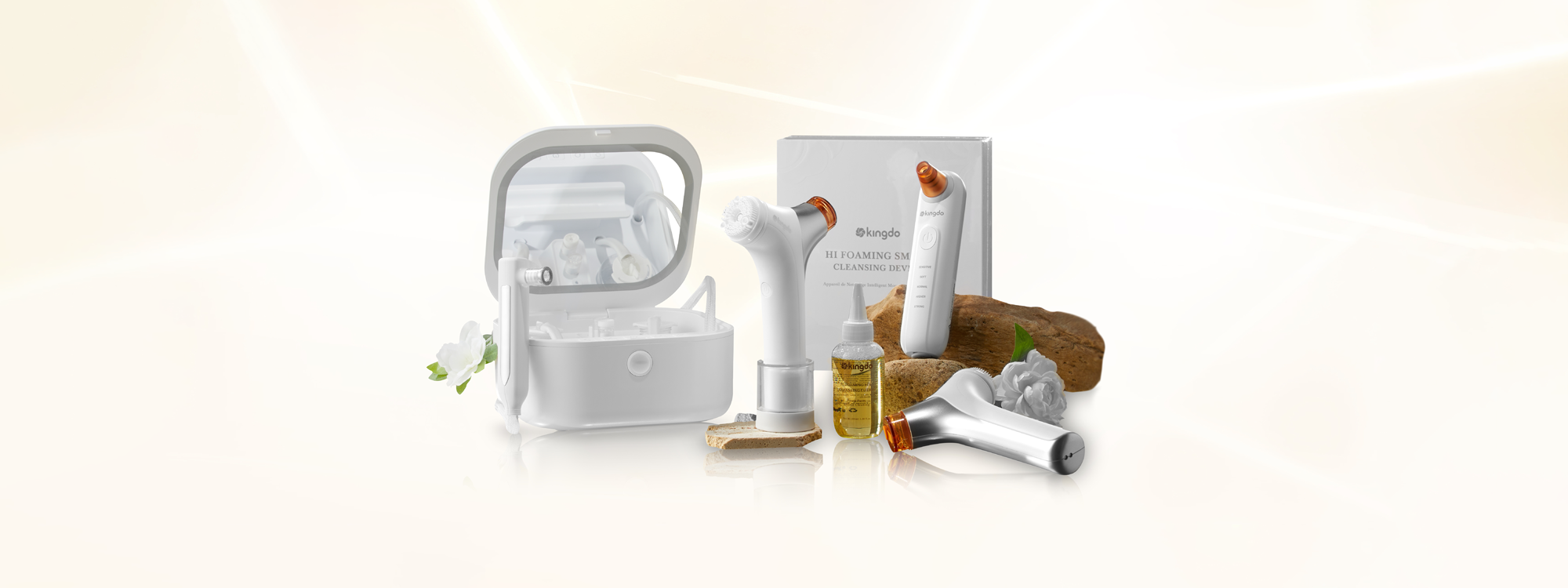kingdo
More Than Skin Deep: The Real Reasons Behind Large Pores
By
Jessi.K
on
July 25, 2025
When Pores Become a Problem
Pores are a natural part of the skin’s structure, essential for oil secretion and thermoregulation. But when they become visibly enlarged, they turn from a benign anatomical detail into a source of frustration, especially in the age of high-resolution selfies and HD cameras. For millions, enlarged pores are more than a minor annoyance — they’re a stubborn aesthetic concern that resists the usual wash-tone-moisturize routine.
This article takes a deep dive — beneath the surface and beyond skincare clichés — to explore what’s truly causing enlarged pores, why your current routine may not be enough, and how a combination of modern skin science, high-performance ingredients, and smart technology could finally offer a real solution.

kingdo TriGlow Smileline Repair Device 2025 Learn More
What Are Pores — and Why Do They Enlarge?
The Biology of a Pore
A pore is simply the opening of a hair follicle, surrounded by sebaceous glands that produce sebum — the natural oil that lubricates our skin and protects it from the environment. While each person has roughly 5 million pores across their body, it’s the concentrated group on the face — particularly the T-zone — that tends to become most noticeable.
Why Do Pores Look Bigger?
Although pores don’t physically “open” or “close” like doors, their appearance can change dramatically based on a number of factors:
Excess Sebum Production: Too much oil can stretch the follicular wall.
Buildup of Dead Skin and Impurities: This leads to clogged pores and blackheads, creating shadowing that makes them look larger.
Loss of Skin Elasticity: As collagen and elastin fibers degrade with age or sun damage, the support system around pores weakens, causing them to appear dilated.
Inflammation or Acne History: Chronic inflammation can damage follicle walls, resulting in permanently enlarged pores.
Genetics and Hormones: Some people simply inherit larger pores or have oilier skin by nature.
“For me, smile Lines seem to constantly remind me: yes, that’s right, I really am getting older.”
Emily Chen
Myths vs. Facts — The Pore Care Misconceptions
Myth: “You Can Shrink Your Pores Permanently”
Fact: You can’t eliminate pores — nor should you want to. But their appearance can be minimized significantly through consistent care and targeted treatment.
Myth: “Ice Water Closes Pores”
Fact: Cold water may cause temporary constriction of blood vessels, but it does not physically shrink the pores. Similarly, hot steam doesn’t “open” pores — it merely softens debris inside them.
Myth: “Oily Skin Is Always the Culprit”
Fact: While oil contributes, many people with dry or combination skin also experience visible pores due to poor skin elasticity or buildup of dead skin.
The Science of Pore Management — What Really Works?
Step One: Deep Cleansing Without Stripping
Over-cleansing can backfire, triggering rebound oil production. What’s needed is:
Gentle exfoliation (e.g., BHA/salicylic acid) to dissolve oil-soluble debris in pores
Micellar or enzyme-based cleansers that clean deeply while maintaining barrier health
Step Two: Resurfacing and Cell Turnover
Chemical exfoliants like glycolic acid and lactic acid accelerate desquamation, revealing smoother texture.
Retinoids help normalize follicular keratinization and increase dermal density, supporting the structure around pores.
Step Three: Barrier Reinforcement
Ingredients like niacinamide not only reduce sebum output but also improve skin elasticity and brighten the surrounding tissue.
Ceramides, cholesterol, and fatty acids rebuild barrier integrity, reducing inflammatory responses that worsen pore appearance.
Step Four: Sun Protection
Chronic UV exposure degrades collagen and elastin — the scaffolding that keeps pores tight. Broad-spectrum sunscreen is one of the most effective anti-pore strategies.

HI FOAMING SMART CLEANSING DEVICE
$129.00
Enter Technology — The Rise of Smart Devices in Pore Care
EMS (Electrical Muscle Stimulation)
By delivering low-level currents into facial muscles, EMS tones the muscle beneath the skin and boosts microcirculation. The result? Firmer skin with less sagging, meaning tighter-looking pores.
LED Light Therapy
Blue light reduces acne-causing bacteria and sebum production.
Red light penetrates deeper to stimulate collagen production, improving skin texture and elasticity.
Electroporation (EP Technology)
EP creates temporary micro-channels in the skin, enhancing the penetration of active ingredients like peptides, hyaluronic acid, and antioxidants — delivering results where topical application alone falls short.
Ultrasonic Cleansing & Microcurrents
Advanced devices now combine sonic vibration with microcurrent lifting to dislodge impurities while tightening the surrounding tissue — a dual attack on both cause and consequence.
Realistic Routines — What a Smart Pore Care Regimen Looks Like

Consistency matters more than perfection. Over time, this multi-layered approach builds healthier, more resilient skin — and pores that fade into the background.







